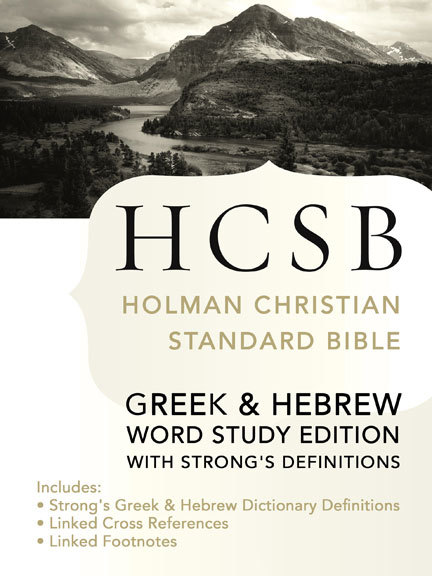The Christian Standard Bible is a revision of the HCSB, updating translation word choices to optimize both faithfulness to the original languages and readability for a modern audience, so that it might be read and understood, inspiring lifelong discipleship. 1 John 4 Christian Standard Bible. Bible CSB 1 John 4. Christian Standard Bible. The Spirit of Truth and the Spirit of Error. 1Dear friends, do not believe every spirit, but test the spiritsato see if they are from God, because many false prophets have gone out into the world. 2This is how you know the Spirit of God: Every spirit that confesses that Jesus Christ has come in the fleshais from God,b3but. The Holman Christian Standard Bible (HCSB) is a modern English Bible translation from Holman Bible Publishers.The New Testament was published in 1999, followed by the full Bible in March 2004. The Christian Standard Bible aims to draw readers into a deeper, more meaningful relationship with God. By translating Scripture into the clearest possible modern English, the CSB allows readers to experience God's Word at its fullest. THE ANCIENT TEXTS AS THEY WERE MEANT TO BE UNDERSTOOD.
Christian Standard Bible Free
Inspiring Lifelong Discipleship
The CSB Study Bible is designed to help you know and be transformed by God’s Word. Featuring the highly readable, highly reliable text of the Christian Standard Bible, this study Bible keeps Scripture primary on every page.
To inspire you to grow in your understanding and love for God’s Word, the CSB Study Bible includes an award-winning array of study resources including over 16,000 study notes, tools, and word studies—each tool presented on the same page as the verses it refers to. For both deep study and daily reading, the CSB Study Bible is the ideal resource for lifelong discipleship.



Christian Standard Bible Amazon
Christian Standard Bible – Translation Method Using original Greek (Nestle-Aland) and Hebrew texts, the Christian Standard Bible used the optimal equivalence approach to translation; this method seeks to combine the best features of formal equivalence (word-for-word) and dynamic equivalence (thought-for-thought).